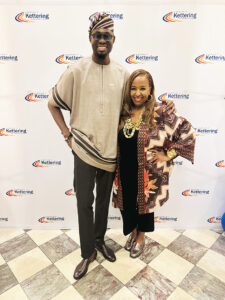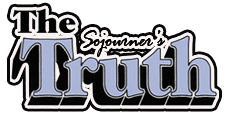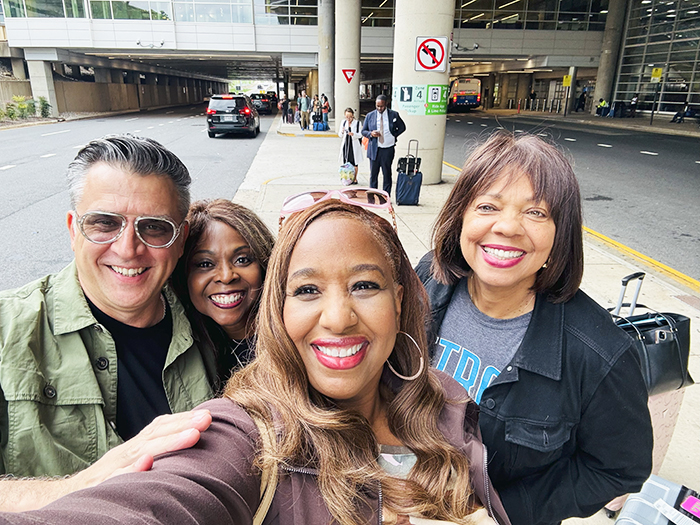
By Rhonda Sewell
Special to The Truth
For the third year in a row, I had the honor of attending the Congressional Black Caucus Foundation’s Annual Legislative Conference (CBCFALC) in Washington, D.C. Each time I walk into this convening, I am reminded why advocacy matters, not only for the Toledo Museum of Art, which I represent as Director of Advocacy and External Affairs, but also for my community, my family, and generations to come.
The Congressional Black Caucus is a group of African-American members of Congress, founded in 1971 to advocate for the interests of Black communities. Its nonprofit partner, the Congressional Black Caucus Foundation, supports policy, education and leadership development. This year, the 54th Legislative Conference (#ALC54) brings together policymakers, advocates and community leaders from across the country.
What strikes me most is how much Toledo’s presence has grown. When I first attended, lobbyist Alan Bannister guided me through the landscape of advocacy with his vast connections. This year, I was joined again by Alan (The Remington Road Group) and a dynamic group of northwest Ohio leaders, including: John Jones (Hope Toledo), Rodney Eason (Shumaker), Crystal Harris Darnell (Lucas County Commissioners), Felica Clark (Metroparks Toledo), Stayce Fowler (U.S. Rep Marcy Kaptur’s Toledo office), Jonathan Bridges (JobsOhio) and State Rep. Elgin Rogers. Some were attending for the first time, others were returning, but together we represented the energy, vision and commitment of Toledo.
Even though northwest Ohio does not have a current Black member of Congress, I take it upon myself to represent my employer and our region on Capitol Hill. I met with chiefs of staff and legislative aides from our congressional delegation, many assigned to arts and culture policy. It was an added bonus to have Eason, vice chair of the Museum’s board, join these advocacy efforts, along with Fowler as a Kaptur representative and Jones as a community partner on some of the meetings. These conversations allow us to bring the museum’s strategies and initiatives closer to those shaping decisions in Washington.
 The conference offers policy sessions, networking, receptions, and cultural experiences, all critical in these divisive times. Yet beyond programming, what always stays with me is the familial spirit of #ALC54. People exchange business cards, connect on LinkedIn, and follow one another on social media, not for show, but to build lasting change.
The conference offers policy sessions, networking, receptions, and cultural experiences, all critical in these divisive times. Yet beyond programming, what always stays with me is the familial spirit of #ALC54. People exchange business cards, connect on LinkedIn, and follow one another on social media, not for show, but to build lasting change.
Several moments stood out for me personally. At a Charles Kettering Foundation reception, I listened as Sherrilyn Ifill, civil rights lawyer and advocate, best known for her leadership as former president and director-counsel of the NAACP Legal Defense and Educational Fund, received one of their highest honors, specifically recognizing the urgent challenges facing Black women in the workforce. The Kettering Foundation is based in Dayton, so Ohio’s presence was strongly felt throughout the event.
I was also thrilled to reconnect with Susan Taylor, editor-in-chief emerita of Essence magazine. I helped bring her to Toledo in 2007 when I worked at the Toledo–Lucas County Public Library. Seeing her 18 years later, still as vibrant and effervescent as ever, was a full-circle moment, and we captured a photo together.
An unexpected joy was meeting Rachel Scott, ABC News White House and Capitol Hill correspondent. After watching her on Live with Kelly and Mark that morning, I found myself sitting with her and friends that evening. Learning she is an Alpha Kappa Alpha Sorority, Incorporated Soror made the encounter even more special. I also enjoyed reconnecting with former Toledoans now living in Washington, D.C., which always feels like a family reunion within the larger conference.
Our delegation met Mayors and those running for Governor from across the nation, and some attended sessions with former U.S. Vice President Kamala Harris. I had the honor of briefly meeting Maryland Governor Wes Moore, proudly noting that my museum director Dr. Adam Levine is also a Rhodes Scholar, like him. It is always a proud moment to be present at the conference with Ohio’s three Black members of Congress: Rep. Joyce Beatty, Rep. Shontel Brown, and Rep. Emilia Sykes, which was both inspiring and grounding, seeing how far representation in Ohio has come.
The exhibitors hall showcased Black-owned businesses, cultural organizations, and vendors. Yet I hope future conferences will include more arts and culture–focused sessions in the policy discussions. Cultural institutions are powerful drivers of belonging, identity, and equity, and these conversations deserve more space in a national forum, especially when our cultural and arts institutions are at risk.
I also noticed a certain irony: some organizations that have cut DEAI initiatives still participated at #ALC54 because I believe they know that Black consumers are essential to their success. That contradiction underscores how much work remains.
Ultimately, the CBCFALC is a conference you make your own. For me, it is about advocating for federal dollars, strengthening relationships, and reminding myself that even in challenging times, there is a powerful sense of camaraderie and hope in rooms like these.
Each year, I leave the Congressional Black Caucus Foundation’s conference encouraged by the people I meet, by the growing number of Toledo leaders who join me, and by the reminder that we are part of something larger than ourselves. My hope is that more advocates, cultural leaders, and Toledoans will experience this conference in the years ahead. Because when we show up together, we move forward together.
The views expressed in this article are not necessarily the views held by officials of the Toledo Museum of Art.

